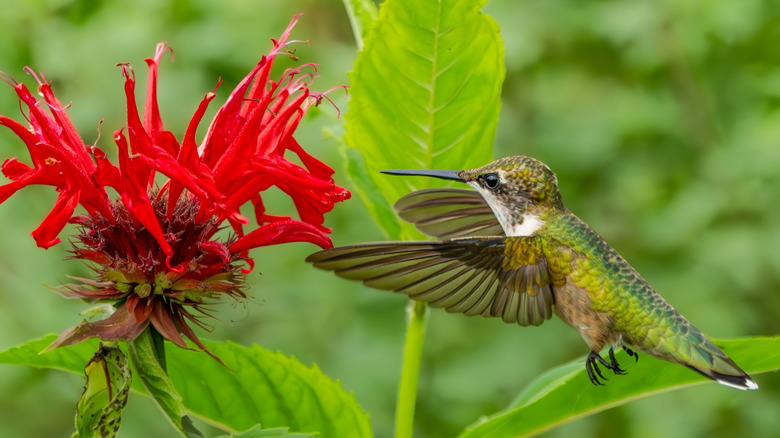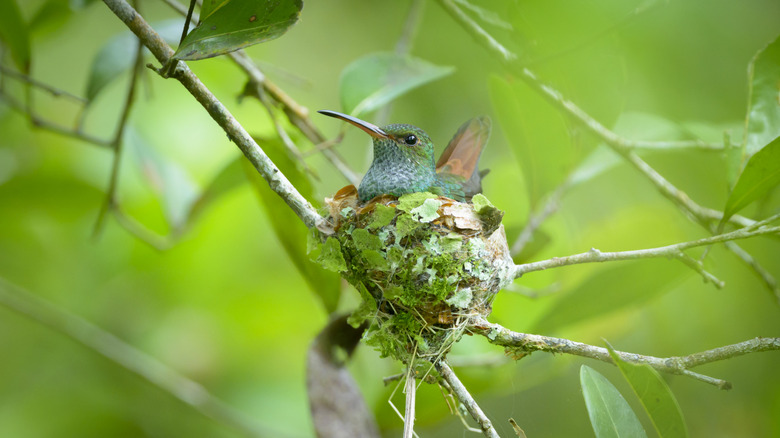The Landscaping Trick That Gets The Attention Of More Hummingbirds
That flash of color. The telltale buzzing. When hummingbirds come to visit, it's a joyous time of year. Providing these sweet little birds with nectar in a feeder is a popular way to bring them close to your windows. But there's even more to think about when landscaping for hummingbirds. Creating a hummingbird habitat throughout your yard that includes not only multiple food sources, but water, shade, and opportunities for perching and nesting will keep these little beauties happy throughout the season.
First, the flowers. Hummingbirds find their food by sight, and planting showy red and orange flowers in groups throughout your landscape will work best to lure beautiful hummingbirds to your yard. Some top flowers that hummingbirds flock to include native honeysuckles, jewelweed, bee balm and columbines. Other hummingbird favorites include red cardinal flower, fireweed, and aptly-named hummingbird trumpet. Your particular climate and location will have different species of hummingbirds that are attracted to different types of native flowers, so a little research is helpful when designing your garden. You can find planting guides tailored to your region online from organizations like Pollinator Partnership and U.S. Department of Agriculture. Your local fish and wildlife department or county habitat program are also great resources for what hummingbirds need in your specific area, and they may even have resources to help you design a pollinator garden that will bring in the birds.
Creating hummingbird habitat throughout your yard
Beyond flowers, hummingbirds will be happiest if you provide them with all the habitat elements they need to thrive. Several species of flowering trees and shrubs provide not only nectar, but serve as important shade and perches for your tiny visitors. Buckeye, hawthorn, crabapple, and tulip trees are just some of the species that provide habitat for these tiny birds to rest and nest. For shrubs, good choices include rhododendron, mountain laurel, and buttonbush. Creating a layered garden of flowers, shrubs and trees is also inviting to insects, which actually make up most of a hummingbird's diet. This includes spiders, which are not only a food source but whose webs are important hummingbird nesting material. So put down the pesticide if you want a thriving hummingbird habitat.
In addition to food and cover, hummingbirds need reliable water sources, and they are especially drawn to running water. Mother hummingbirds locate their nests near water sources. Providing hummingbird water fountains throughout your landscape will be a major hit with these birds, and will encourage more of them to make a home in your backyard haven.

